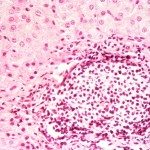Lien vers Pubmed [PMID] – 22276598
Vet. Res. 2012;43:6
Cyprinid herpesvirus 3 (CyHV-3), also known as Koi herpesvirus, is the etiological agent of a mortal disease in common and koi carp. Recently, we investigated the entry of CyHV-3 in carp using bioluminescence imaging and a CyHV-3 recombinant strain expressing luciferase (LUC). We demonstrated that the skin is the major portal of entry after inoculation of carp by immersion in water containing CyHV-3. While this model of infection mimics some natural conditions in which infection takes place, other epidemiological conditions could favour entry of virus through the digestive tract. Here, we investigated whether ingestion of infectious materials mediates CyHV-3 entry through the digestive tract. Carp were fed with materials contaminated with the CyHV-3 LUC recombinant (oral contamination) or immersed in water containing the virus (contamination by immersion). Bioluminescence imaging analyses performed at different times post-infection led to the following observations: (i) the pharyngeal periodontal mucosa is the major portal of entry after oral contamination, while the skin is the major portal of entry after contamination by immersion. (ii) Both modes of inoculation led to the spreading of the infection to the various organs tested. However, the timing and the sequence in which some of the organs turned positive were different between the two modes of inoculation. Finally, we compared the disease induced by the two inoculation modes. They led to comparable clinical signs and mortality rate. The results of the present study suggest that, based on epidemiological conditions, CyHV-3 can enter carp either by skin or periodontal pharyngeal mucosal infection.
